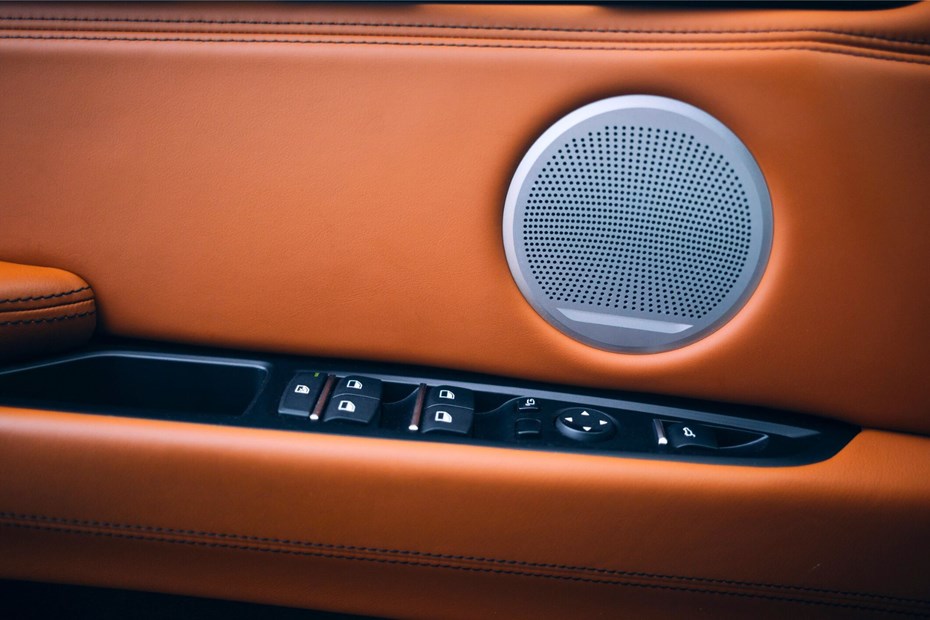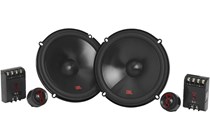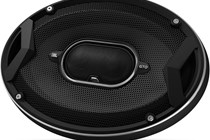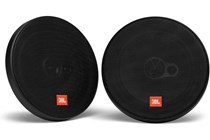There is a near-endless amount of content you can listen to using a good set of car speakers. It appears every celebrity now runs a podcast, radio stations are (mostly) excellent, and the emergence of streaming means almost any song you want can be played whenever you want. In short, there’s never been a better time for in-car entertainment.
If you’re familiar with Audis, a rather pricey option is the Bang and Olufsen sound system. You’re able to tell by the cylinder-like units that rise up from the top of the dashboard and the fact they emulate a literal in-car orchestra. As a result, premium sound systems are an elite option on many cars, such as Burmester systems in Mercedes Benzes and Bose in Porsches. It’s clear that sound is of great importance to the consumer.
It’s a shame, however, that most cars only offer a basic audio experience along with the factory stereo system. The natural design of a cockpit lends itself to surround sound, which means some aftermarket car speakers can transform how your favourite song sounds.
The best car speakers 2025 at a glance
An upgrade to your car’s speaker system will improve sound quality but the whole process can be hard to get your head around. There are a load of different speakers out there at different price points, which to most people, look no different to one another. You may even need a good sound system to get the most out of your Bluetooth device. We’ve created a list of our favourites ranging in styles and budgets for everyone.
The best car speakers 2025
The best car speakers
As an upgrade to regular car speakers - especially if they're quite old and dated in the modern day, these JBL units are a great place to start if you're thinking about upgrading your in-car setup.
Pros
- Good sound quality for the size and price point
- Compact enough to fit within a variety of car speaker slots, measuring at 6.5 inches wide
- Good value for money for the pair at under £70
Cons
- Are not as capable as others at resisting the amps at 4 ohms
Editor's pick
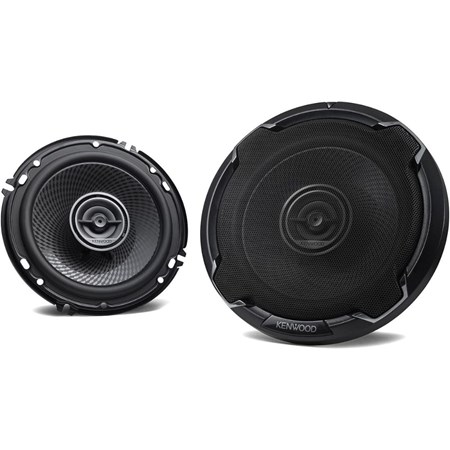

Reportedly, the build quality and materials isn't brilliant on initial impressions, but the sound itself makes up for it. They make for a nice upgrade to a car if the sound system in your current car isn't as great as it could be.
Pros
- Easy to install, thanks to average-size 6.5 inch diameter
- Good value for money at just over £60 for the pair
- Can take a lot of power with 320W and 4 ohms
Cons
- Build quality is reportedly quite compromised
Best budget car speakers
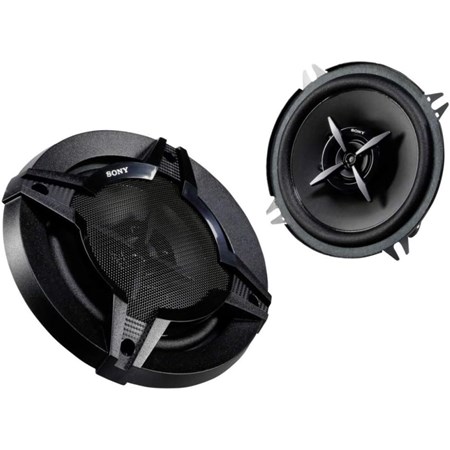

Peak power isn't as great as some others at just 230W but there is a healthy frequency range of 70Hz to 24kHz, which makes the Sony speakers pretty capable for the price point.
Pros
- Great sound quality with 230W of power to back it up
- Good value for money at just £27 for the pair
- Nice frequency range of 65Hz to 24kHz
Cons
- Not the most powerful option for bass-heavy music
- Peak power not as great as the other options
Best mid-range car speakers
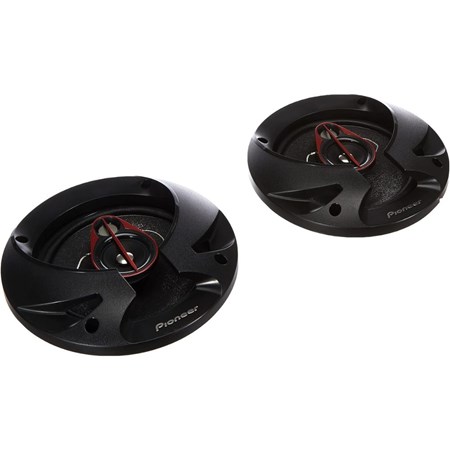

It has a frequency rate of 36Hz to 31kHz along with 250W worth of power with 40W RMS (the measurement denoting how much continuous power the amplifier can output). They also measure in at 6.5 inches (17cm), meaning they can competitively fit in a range of vehicles and are easier than others to install - or at least without much fabrication.
Pros
- Healthy frequency range of 36Hz to 31kHz
- Easy to install, thanks to relatively average 17cm diameter
- Great sound quality overall, thanks to 250W of power and 40W RMS
Cons
- Bass is weak
- Max Watt input a bit short on others at this price point
Best car speaker setup for beginners
They measure in at 6.5 inches each, which should make them compatible for a lot of different cars without much fuss and/or fabrication when installing them.
Pros
- Easy to install, thanks to 6.5 inch diameter
- Great sound quality with 250W of power supporting it
- Engineered to be efficient in its sound delivery, thanks to tweeter
Cons
- Won't fit every car and frequency rate isn't as wide as others
Best advanced car speakers


Despite the extra potential room they'll take, these speakers still impress with 300W of peak power and 100W RMS and a frequency rate of 46Hz to 21kHz. If they don't suit you, the GTO series comes in all sorts of guises to choose from for your needs.
Pros
- Slightly higher ohm rating than average
- Can take a lot of power at 300W max
- Good quality speakers with higher grade materials
Cons
- Max frequency response not as impressive as others
FAQs and what you need to know about car speakers
-
Is upgrading your car's speakers worth it?
There's no right or wrong answer. Older vehicles might've come with a fairly basic sound setup that doesn't do the radio or your music taste justice. So, naturally, looking for an upgrade can be a great way of enhancing your motoring ambience without having to change to a vehicle with a premium sound system.
Given how relatively inexpensive some of the speakers can be, it's the time and effort of installing them that can be the hard part. But with enough guidance of your vehicle and how to install/de-install the right components, it will be worth it for those willing to put in the effort.
If sound really is important to you when buying a used car, it's worth checking if it was specified with the premium sound system from new. Most of the time, manufacturers will be partnered with companies like Bose or Meridian Audio and their logos will be attached to the speakers. -
What is the difference between coaxial and component speakers?
Coaxial speakers will include a woofer and a tweeter in one speaker unit. These are the most popular speaker setup for cars because they are more compact and cheaper to produce. They're certainly a lot simpler than portable campervan speakers that you might use on your holiday. Component speakers have separate speakers for the tweeter and woofer.
The key difference between the two is that component speakers do have a boost in sound quality. They are available for cars but do take up more space and are more costly to buy and install. -
What are tweeters and woofers?
Put simply, a tweeter produces high-frequency sounds, a woofer makes your lower frequencies. Coaxial speakers will have both included, component ones are sometimes sold separately.
-
What are Ohms and what does it mean?
Ohms is the measurement of electrical resistance. Specifically, they're the rating of how resistant a speaker is to the power of the amplifier. Lots of the speakers on this list have 4 ohms, which is about average. Some speakers (away from a car) have up to 8 ohms which will be crisper and of better sound quality due to the higher resistance to the amp.
-
How do I install new speakers?
If you're replacing your old car's speakers, then changing them out should be quite simple. Measure the size of the old speakers and buy some new ones that match that size. Wiring them up is a simple affair and will come with clear instructions from your manufacturer. It's a bit more complex than fitting an add-on DAB radio adaptor and involves more hardwiring, so remember to disconnect your battery before you begin working.
-
Is Watts important with car speakers?
The simple answer is yes. Wattage in speakers and amplifiers is about how much power a speaker can handle and how much power an amplifier is putting out. Amplifier spec sheets will often reference Continuous Power (occasionally referenced as Continuous Power Output or Continuous RMS power) and Dynamic (or Peak) Power.
The whole process is much more complex than a simple USB-to-USB-C adaptor setup. But put simply, continuous power indicates how powerful an amplifier is in normal operation. However, Dynamic or Peak Power could push 100 watts into 8 ohms and 150 watts into 4 ohms. That's because Dynamic Power is designed to ensure that the wide dynamics demanded by modern digital music and movie formats are properly powered at the moment. However, this power is only utilised for milliseconds, making it an unreliable indicator for general amplifier power.
In regards to speakers, many manufacturers have their own way of displaying recommended amplification (wattage) levels. Manufacturers may provide you with Minimum Recommended Power, Maximum Continuous Power, and Maximum Short-Term Peak Power ratings for your speakers.
Sign up to the Parkers Newsletter to keep up to date with more of the latest reviews, news, and recommendations from the Parkers team.
Just so you know, whilst we may receive a commission or other compensation from the links on this page, we never allow this to influence product selections – read why you should trust us.
Just so you know, we may receive a commission or other compensation from the links on this website - read why you should trust us.


